Visually Stunning Watercolor after Codex Vaticanus
An original watercolor by Captain William H. Shippard. The image clearly depicts Spanish soldiers as well as Aztec or Mexica people.
Transcription of note by Shippard, written on the sheet in his distinctive hand:
Mexican Painting. Codex Vaticanus. 37338. Page 137. Aglio Vol. 2.
Specimen of Mexican Picture Writing.
Facsimile from Page 137 of an Original Mexican MS. of 149 Pages, preserved in the Pope's Library of the Vatican Numbered 3738. called the larger Vatican Codex. Lord Kingsborough says Acosta mentions this Mexican Painting, but Zoega [?] and A. Humboldt imagine that Acosta and Kircher refer to the other MS. No. 3776.
This Painting represents the Arrival of the Spaniards in America. All Historians and all travellers of credit agree that it was by this means the Mexicans transmitted to their King the news of the arrival of the Spaniards.
Their supposed numbers being signified thus [several pictorial symbols] meaning 500 men each little mark thus [symbol] being 20 and thus [another symbol] put for 400. The year in which this happened being portrayed by their Astronomical signs as shown in the little square tablets marked above. This Painting is particularly curious as proving the Invention of Drawing to have preceded Writing, and also furnishing tangible proofs of what must be considered the most primitive style if not the earliest state of writing whence we may fairly and naturally [a few lost words] demonstrate? (.... from analogy) that all Nations in the Infancy of civilization, have pictured rude representations [loss of word] prior to the Inventions of Letters, Hieroglyphs or Symbols of any sort, which we likewise know [loss of words] been the case amongst the Chinese. W. H. Shippard
Codex Rios or Codex Vaticanus A (3738)
Codex Vaticanus A (3738), also known as the Codex Rios, is a Mexican codex that was created between 1570 and 1589. Held in the Vatican Library, its 100+ pages comprise various sections, covering cosmological, mythological, and ethnographical topics. It is also known as Codex Rios and is understood to be an augmentation of a Spanish colonial-era manuscript, Codex Telleriano-Remensis, that is partially attributed to Pedro de los Ríos, a Dominican friar who worked in central Mexico between 1547 and 1562. The codex itself was likely written and drawn in Italy after 1566.
The Codex Rios as a whole is focused on the Tolteca-Chichimeca culture of the Tehuacan Valley in modern-day Puebla and Oaxaca, but also relates events after the arrival of the Spaniards.
It can be divided into seven sections:
- Cosmological and mythological traditions with emphasis on the four epochs.
- An almanac, or tonalamatl, for the 260-day divinatory year common in Mesoamerica.
- Calendar tables for the years 1558 through 1619, without drawings.
- An 18-month festival calendar, with drawings of the gods of each period.
- Ritual customs, with portraits of Indians.
- Pictorial chronicles for the years 1195-1549 beginning with the migration from Chicomaztoc and covering later events in the Valley of Mexico.
- Glyphs for the years 1556 through 1562, without text or additional drawings.
The present watercolor is clearly from the 6th section of pictorial chronicles.
William Henry Shippard's Mexican Paintings
William H. Shippard (1803-1865) was a pioneering 19th-century British museologist - an unsung progenitor of modern-day museum anthropology. While he is chiefly remembered as a friend of George Catlin, Shippard's profound interest in the ancient civilizations of Mexico connects him with a cohort of British contemporaries that include Lord Kingsborough and the showman William Bullock. Shippard's fascination with Mesoamerica propelled him to amass a significant collection of visual material derived from Aztec codices which he copied himself. A figure of some intrigue and scholarly ambition, Shippard endeavored to establish the Museum of Mankind in London, which seems to have evolved from his deep interest in early Mexican cultures. Although the museum did not come to fruition, Shippard's original artwork, mainly pen and ink drawings enriched with vibrant hand coloring, based on Mexican codices held in European libraries and collections, remains a valuable historical source, particularly for understanding the allure of Mexican antiquity within early 19th-century British collecting circles.
Capt. William H. Shippard, a friend of George Catlin and an avid watercolorist and museologist, was also a pioneering British Mesoamericanist. Shippard appears in British newspaper notices from the 1840s as a London-based lecturer who spoke about Native Americans and Mexican antiquities. We know he was a friend of George Catlin, and that he was involved in attempts to organize early London museum exhibitions of Mexican antiquities. In the latter efforts Shippard would seem to coincide with a group of like minded prominent English collectors interested in Mexican topics active during the 1820s and 1830s, including Lord Kingsborough and the bibliomaniac Sir Thomas Phillipps, among others. He seems to have been an armchair anthropologist and would-be museum founder, whose ambitious ideas for a London-based museum never got off the ground - at least not beyond the prospectus-printing stage. Certain aspects of Shippard's career are akin to William Bullock, the showman and connoisseur of Mexican antiquities who actually did travel to Mexico. Bullock published a notable book about his Mexican travels, and achieved a level of recognition in his day as the empresario of London's Egyptian Hall, wherein he thrilled large London audiences with his elaborate exhibitions of exotica, including Mexican items.









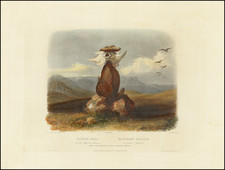
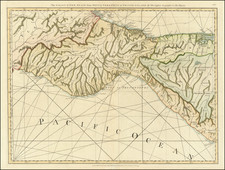
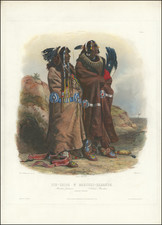
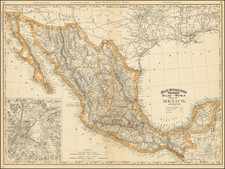
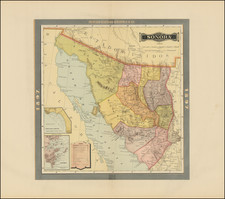
![[ Pictish Warrior Woman ] Feminae Pictae icon V](https://storage.googleapis.com/raremaps/img/small/99648.jpg)